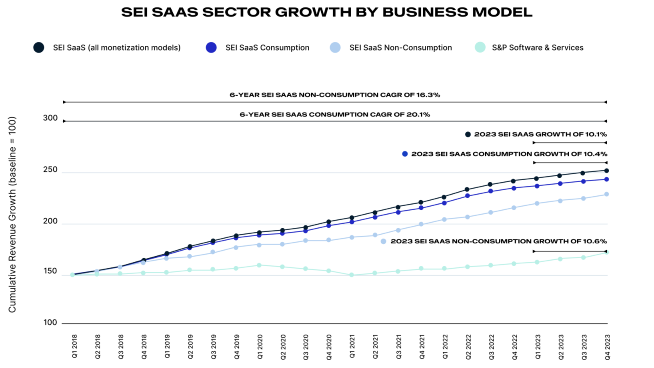Table des
matières
Le guide ultime de la tarification basée sur l'utilisation
Le guide ultime de la tarification basée sur l'utilisation
01
02 Minutes de Lecture

Qu'est-ce que la tarification basée sur l'utilisation ?
La tarification basée sur l’utilisation est une stratégie où les clients sont facturés en fonction de la quantité de service ou de produit qu’ils utilisent. Cela pourrait être n’importe quoi, du nombre d’appels API, de gigaoctets de données utilisées, de kilowattheures d’énergie, ou de sorties d’un chatbot.
Cette approche flexible de tarification offre de la valeur et de la transparence aux clients et aide à construire la confiance et la fidélité. Les modèles d’utilisation sont utilisés dans plusieurs industries, y compris l’informatique en nuage, les services publics et les télécommunications, où ils permettent aux entreprises de dimensionner leurs services en fonction des besoins et des habitudes d’utilisation des clients. La tarification basée sur l’utilisation et les modèles hybrides deviennent également rapidement le modèle de choix pour les offres IA et GenAI, à la fois pour les fournisseurs et leurs clients.
Lancer un modèle basé sur l’utilisation peut sembler un défi insurmontable, mais ce guide fournira les connaissances et les stratégies dont vous avez besoin pour réussir à faire la transition à travers votre entreprise.

Partagez Ce Chapitre
Pourquoi une tarification basée sur l'utilisation ?
L’usage émerge rapidement comme le modèle de tarification de choix pour les entreprises de tous les secteurs, en particulier celles développant et lançant de nouvelles offres GenAI. C’est parce que le modèle offre un bon alignement avec et démonstration de valeur au client.
La recherche de l’Institut Subscribed a montré que beaucoup des entreprises SaaS à la croissance la plus rapide utilisent un modèle basé sur l’usage. En fait, le nombre d’entreprises employant une forme de tarification basée sur l’usage a augmenté de 9% à 26% entre 2020 et 2022.

Pourquoi les modèles d'utilisation sont-ils si populaires ?
La tarification basée sur l’utilisation peut être un différenciateur compétitif et peut permettre un coût de vente plus bas et des barrières à l’entrée plus basses. Et lorsqu’elle est utilisée dans le cadre d’un modèle hybride, l’utilisation a démontré qu’elle contribue à une croissance plus élevée d’une année sur l’autre (YoY) du revenu récurrent annuel (ARR) pour toutes les tailles d’entreprises.
Les clients exigent de plus en plus un retour sur investissement (ROI) clair et un risque initial plus faible – ils veulent une meilleure idée de ce qu’ils utilisent et de la valeur qu’ils tireront de votre produit. Et 80% des clients rapportent que la tarification basée sur l’utilisation offre une meilleure adéquation avec la valeur qu’ils reçoivent.
Les clients aiment la flexibilité lorsqu’ils essaient un produit pour la première fois, ce qui fait de la tarification simple au fur et à mesure un bon choix pour l’intégration de nouveaux clients. Mais à mesure qu’ils adoptent votre solution et gagnent en confiance, ils voudront plus de prévisibilité. Par conséquent, les clients s’attendront à ce que la nature de la manière dont ils paient pour l’utilisation de votre produit change à mesure que leur relation avec vous évolue. En conséquence, vos capacités de monétisation devront également être prêtes à changer pour répondre aux attentes des clients.

Quelles sont les clés du succès d'utilisation ?
Pour faire de votre stratégie de tarification basée sur l’utilisation un succès – à travers l’entreprise – vous aurez besoin des bonnes stratégies et solutions holistiques pour vous aider :
- Comprendre si l’utilisation est le bon choix pour votre entreprise
- Médier, mesurer et tarifer les événements d’utilisation
- Assurer une tarification et un conditionnement optimaux et flexibles
- Simplifier les processus et réduire les maux de tête pour la finance
- Analyser et reconnaître continuellement les revenus d’utilisation
Les chapitres suivants vous équiperont alors que vous commencez votre voyage d’utilisation. De plus, nous vous dirons comment trouver les bonnes solutions d’utilisation de bout en bout pour développer votre entreprise.
Continuez à apprendre sur l'utilisation
Maintenant que nous avons couvert les bases de la tarification basée sur l’utilisation, il est temps de découvrir quel modèle convient à votre entreprise et comment lancer votre propre stratégie basée sur l’utilisation. Continuez à lire pour en savoir plus.

